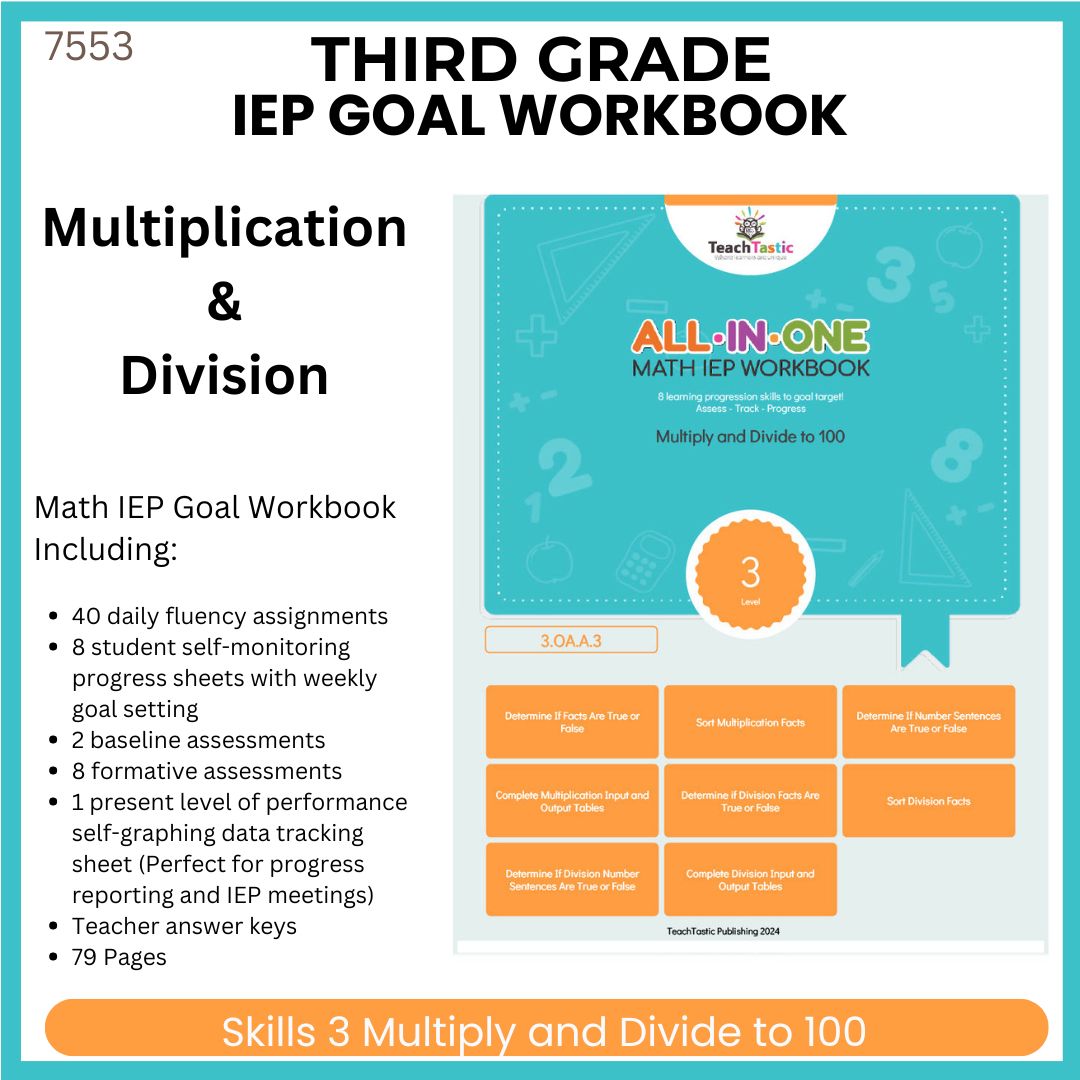Lesson Plan Template
-
Grade
-
Subject
-
Section
Third
Math
-
Competency
Multiplication fluency up to 10
-
Aligned Standards
Operations and Algebraic Thinking
-
Strand
3.OA.A.3
-
Vocabulary
Multiplication: Repeated addition of the same number.
Number Sentence: A mathematical statement that shows the relationship between numbers, often including an operation and an equality sign.
True: A correct statement; both sides of the equation are equal.
False: An incorrect statement; both sides of the equation are not equal.
Fact Finder
Determine If Facts Are True or False
Prerequisite Skill
Materials and Preparation
- Whiteboard and markers
- TeachTastic Worksheet Pack for Determining True or False Multiplication Facts
- Multiplication flashcards
- Number sentence cards for class activities
Learning Objectives
- Students will understand how to evaluate multiplication number sentences.
- Students will be able to determine if a multiplication fact is true or false by calculating both sides of the equation.
- Students will explain why a multiplication fact is true or false.
Introduction
Start the lesson by reviewing basic multiplication facts with the class. Display a multiplication table and ask students to recall some key multiplication facts. Introduce the concept of a number sentence and explain that today they will learn how to determine if a multiplication number sentence is true or false. Provide a simple example on the board, such as 3 X 5 = 153, and ask if it’s true or false, guiding students to understand why it is true.
Explicit Instruction/Teacher modeling
Explain that to determine if a multiplication number sentence is true, students need to calculate the multiplication on the left side of the equation and compare it to the number on the right side. Demonstrate with the example 4 X 6 = 24. Show the multiplication process step-by-step and then explain that the number sentence is true because both sides are equal. Repeat with a false example, such as 5 X 3 = 205, and show how the sides are unequal, making the number sentence false.
Guided Practice
Hand out the TeachTastic Worksheet Pack for Determining True or False Multiplication Facts. Work through a few problems as a class, asking students to solve the multiplication problems and determine if the sentences are true or false. Encourage students to explain their reasoning. Use number sentence cards for a group activity where students match multiplication problems with true or false signs.
Independent Practice
Allow students to complete the remaining problems in the TeachTastic Worksheet Pack independently. Circulate the room to offer support and ensure that students are correctly calculating the multiplication and determining the truth of the number sentences.
Differentiation
Support
- Offer additional practice with manipulatives, such as counters, for students who need visual support.
- Provide step-by-step written guides for solving multiplication sentences.
- Pair students who are struggling with a peer tutor for additional support.
Extension
- Challenge students to create their own true and false multiplication sentences and exchange them with a partner to solve.
- Provide multiplication problems with larger numbers or decimals for advanced students.
- Introduce the concept of using division to check the truth of a multiplication number sentence.
Assessment
Use the TeachTastic Worksheet Pack to assess students’ understanding. Check for accuracy in determining the truth of multiplication sentences and look at the explanations provided in the exit ticket. Provide additional practice for students who struggle with the concept.
Review and closing
Review the key points of the lesson by revisiting the concept of a number sentence and the criteria for determining if it is true or false. Address any misconceptions and clarify any remaining questions. Conclude by reminding students of the importance of verifying multiplication facts.
Misconceptions
- Misconception: Students may think that any multiplication sentence is true just because it looks correct. Correction: Emphasize the importance of actually performing the multiplication to check both sides of the equation.
- Misconception: Students might confuse the equality sign with the multiplication sign. Correction: Reinforce the difference between the symbols and their roles in a number sentence.
- Misconception: Students might assume a number sentence is false if they do not immediately recognize the multiplication fact. Correction: Encourage them to always calculate both sides before deciding if it’s true or false.




